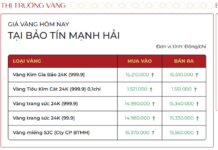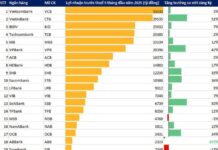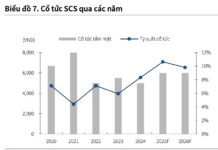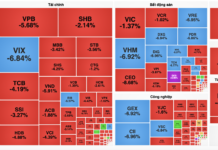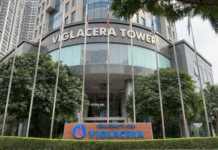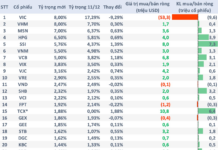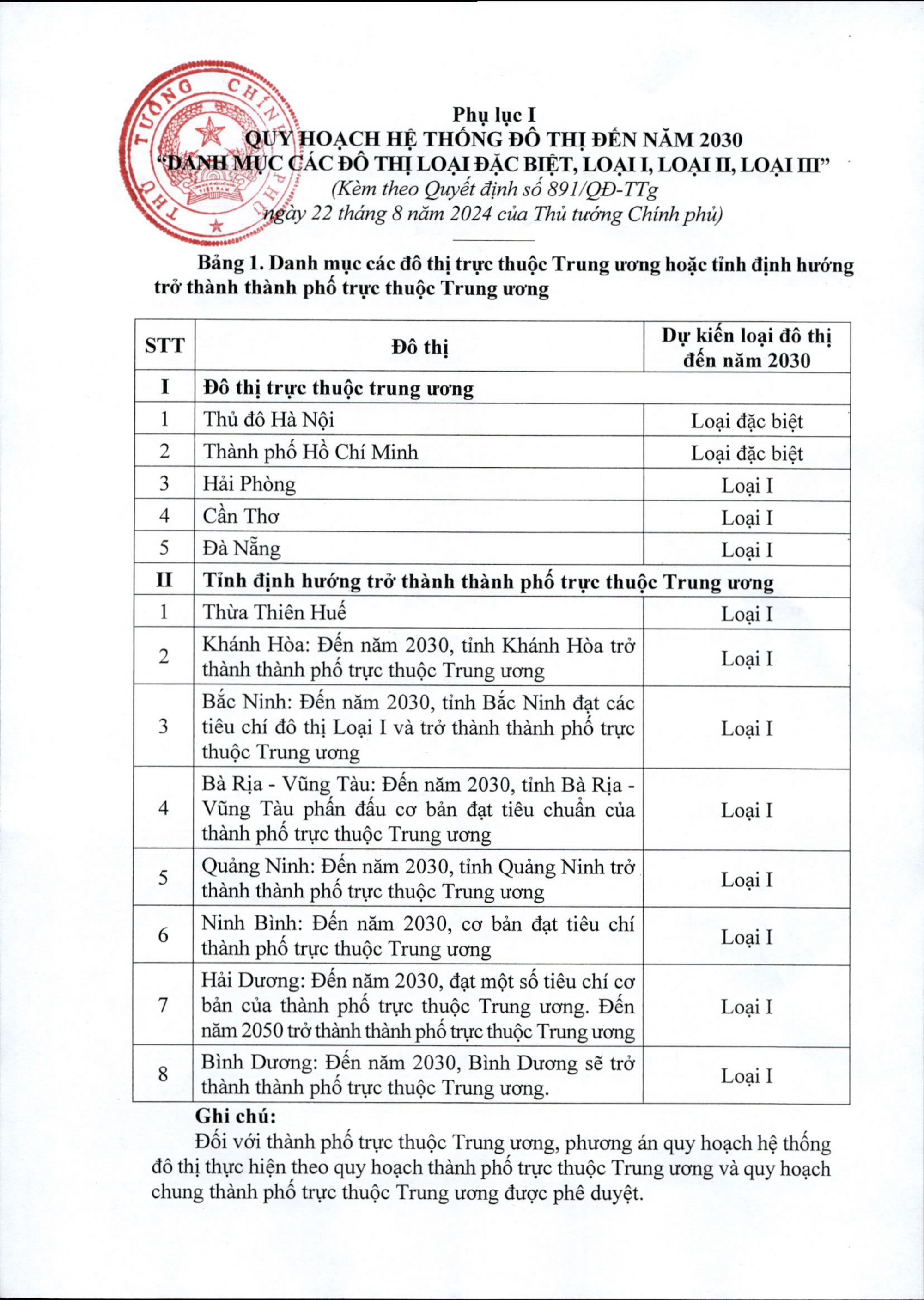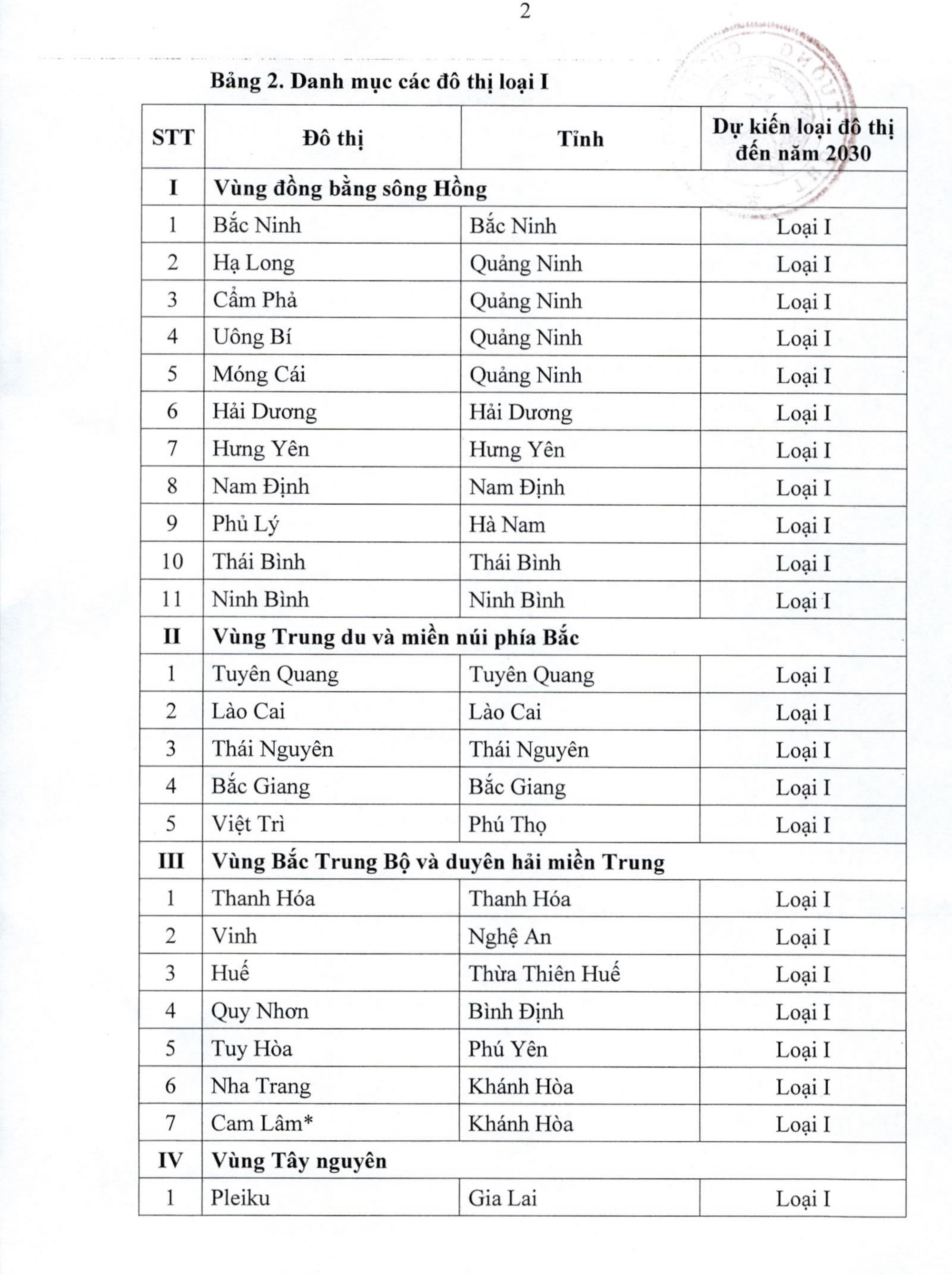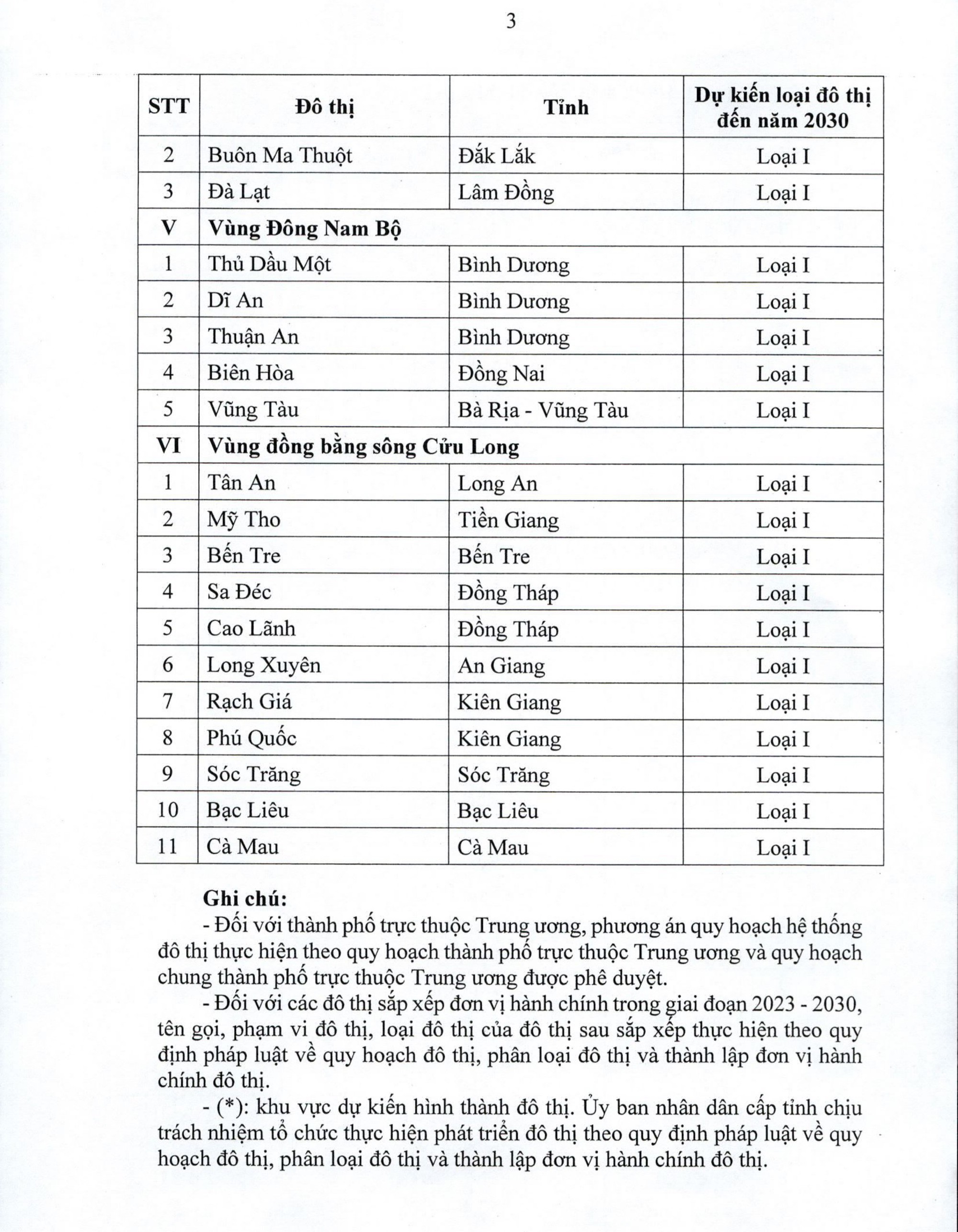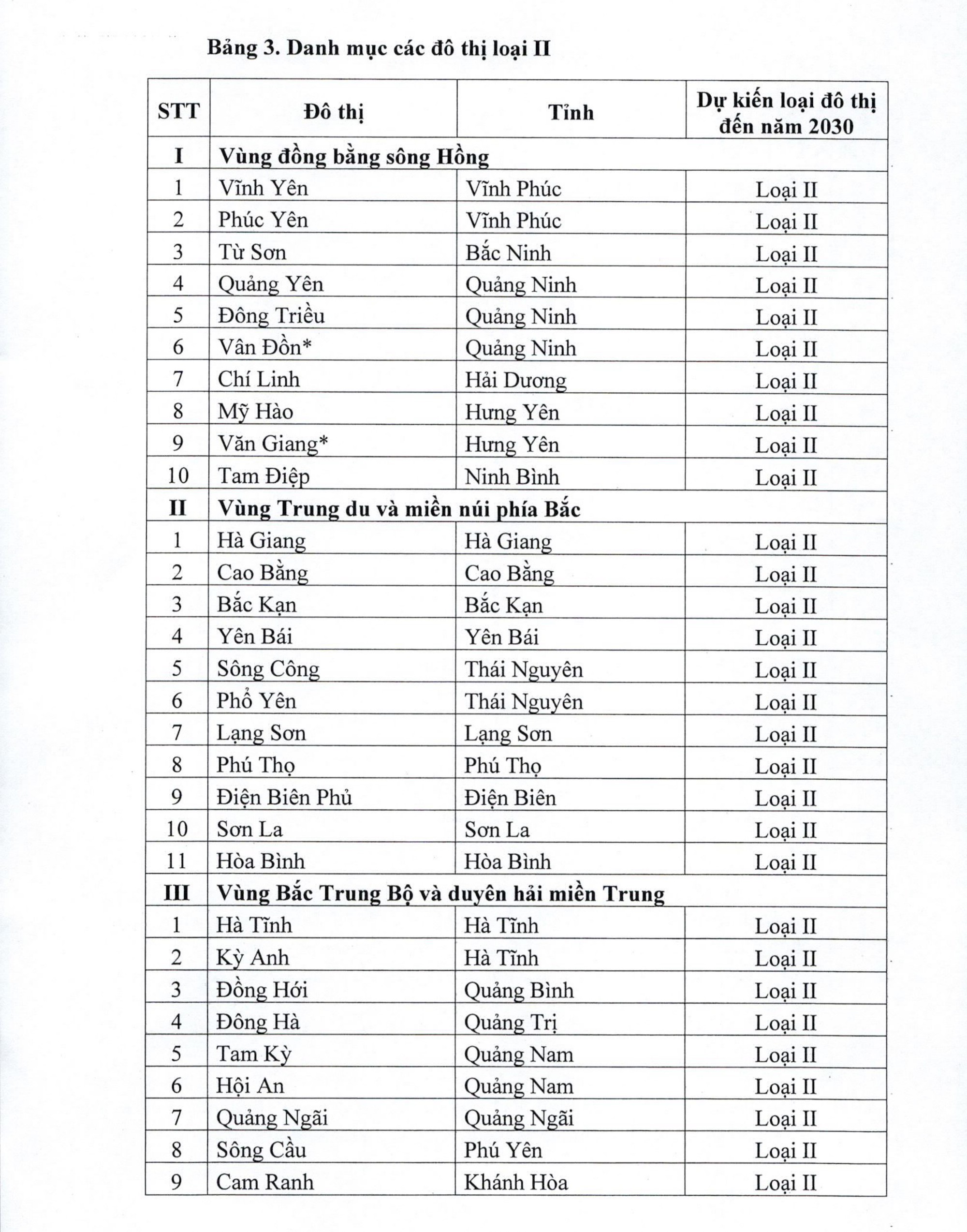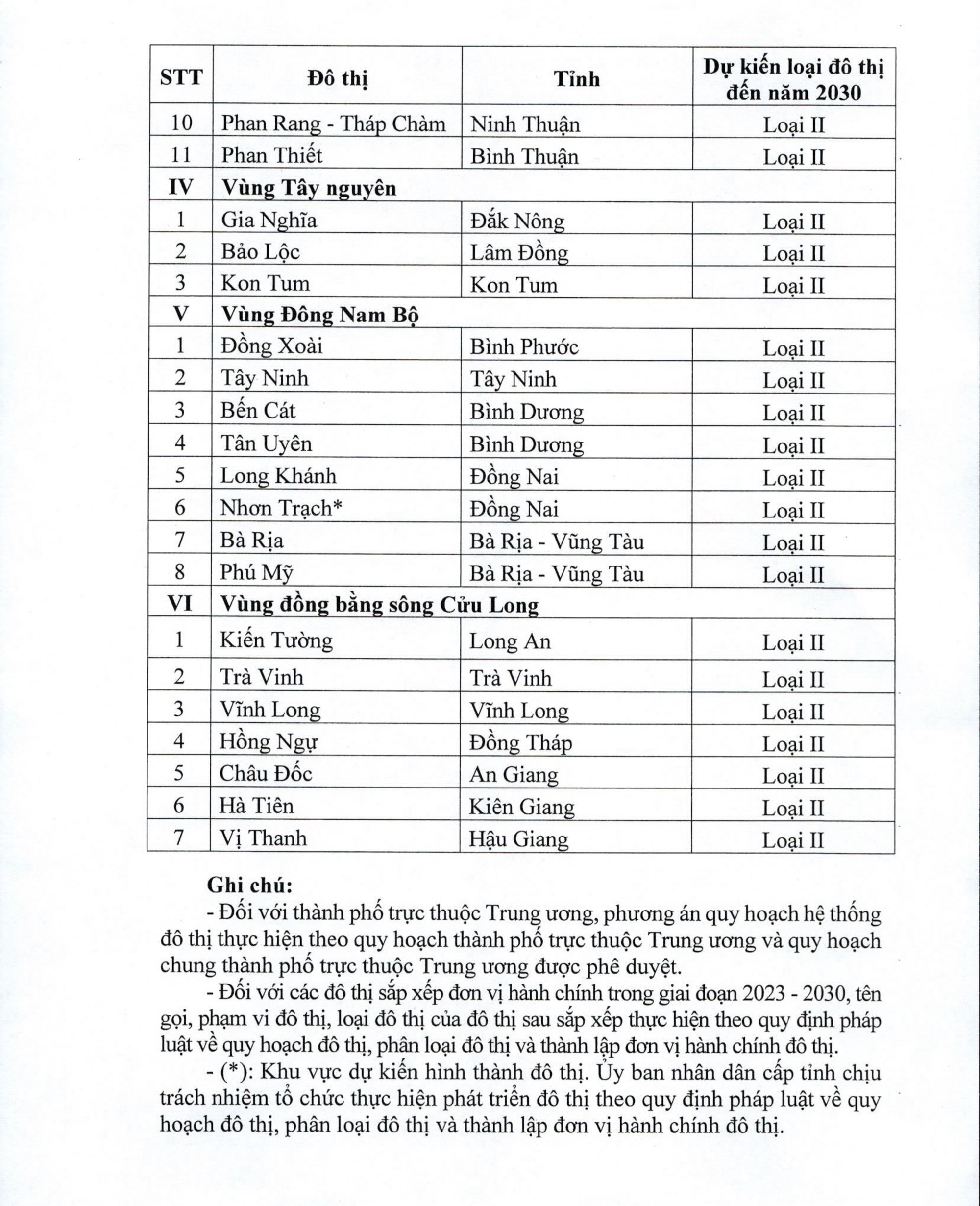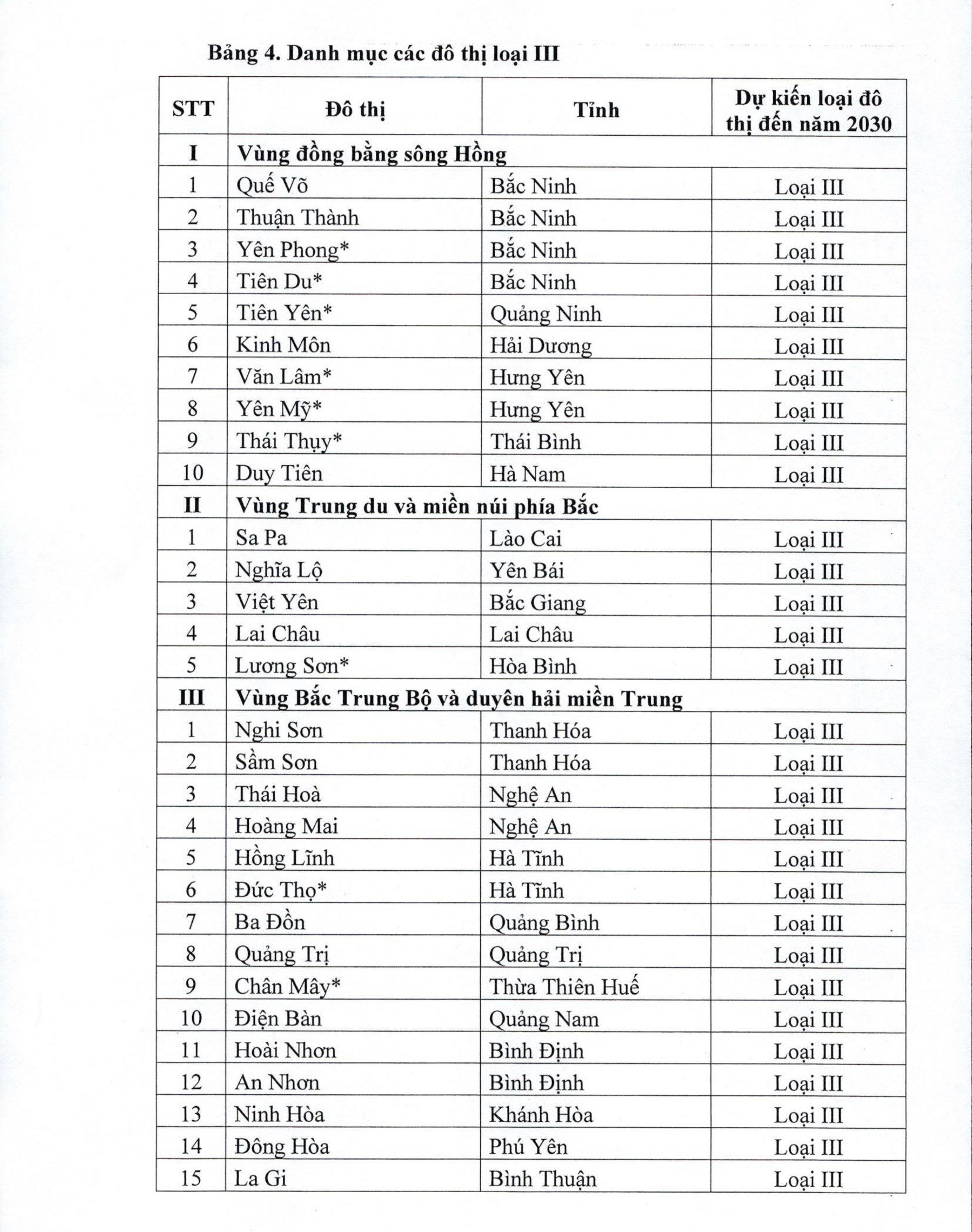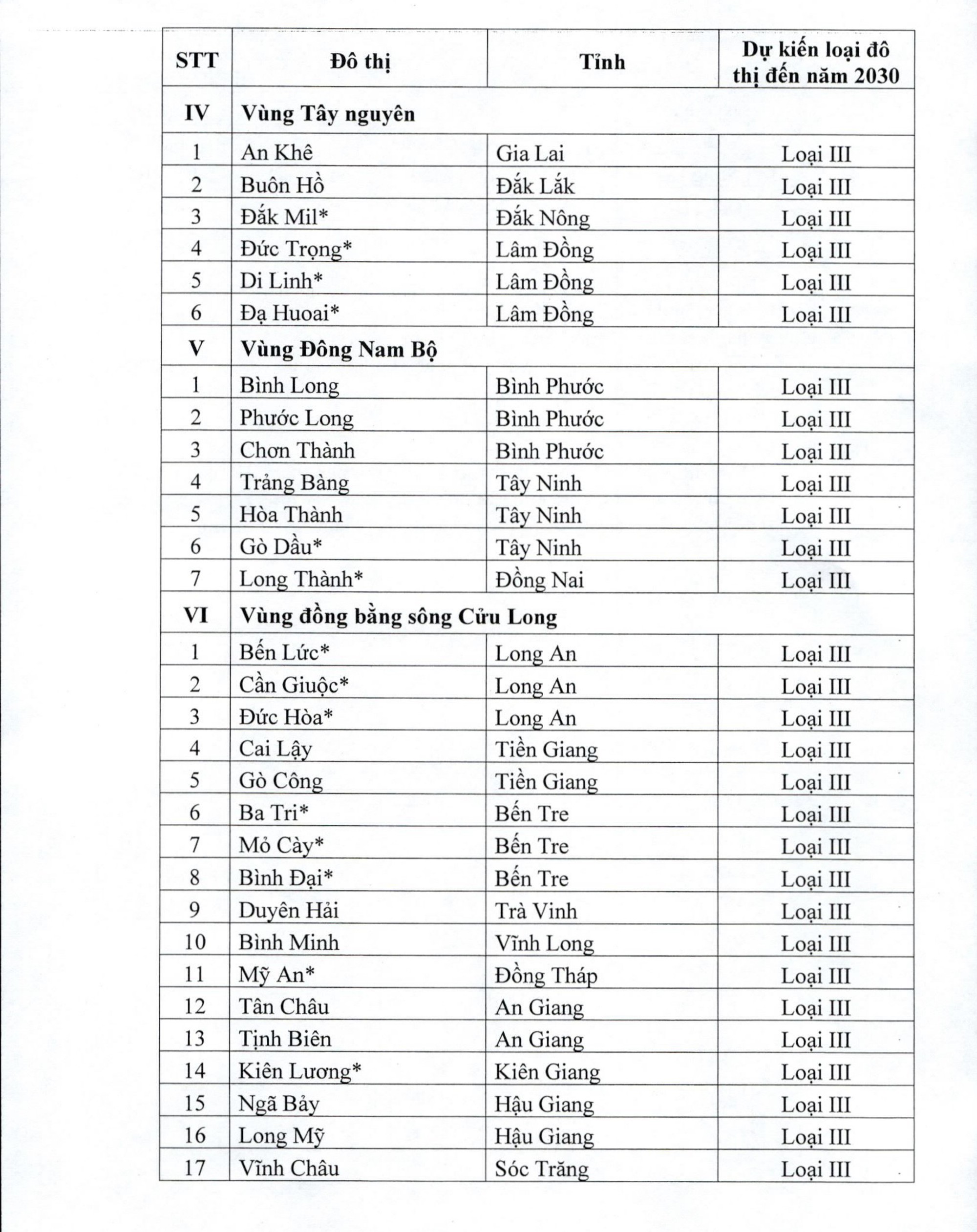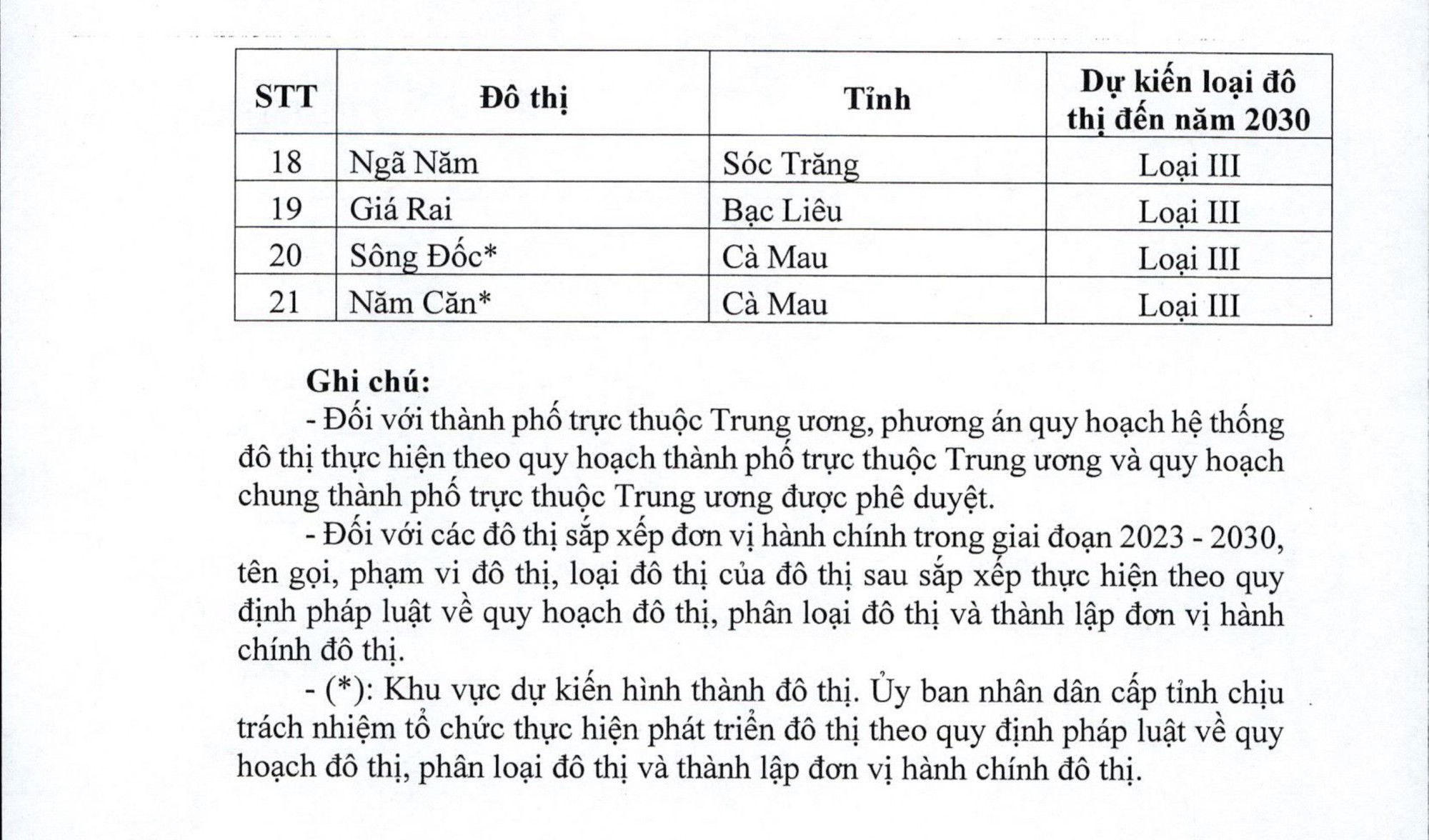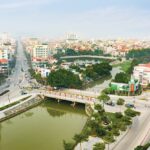According to the plan, there are five centrally-governed municipalities: Hanoi, Ho Chi Minh City (expected to become a special municipality by 2030), Haiphong, Can Tho, and Danang (expected to become a Type I city by 2030).
Eight provinces are oriented to become centrally-governed cities, including Thua Thien Hue, Khanh Hoa, Bac Ninh, Ba Ria – Vung Tau, Quang Ninh, Ninh Binh, Hai Duong, and Binh Duong (expected to become a Type I city by 2030).
List of Centrally-Governed Municipalities and Provinces Oriented to Become Centrally-Governed Cities
List of Type I Cities
The plan has issued a list of 42 Type I cities, including 11 in the Red River Delta region, five in the North Central and Coastal region, seven in the North Midland and Mountainous region, three in the Central Highlands region, five in the Southeast region, and 11 in the Mekong Delta region.
List of Type II Cities
There are 50 Type II cities, including 10 in the Red River Delta region, 11 in the North Midland and Mountainous region, 11 in the North Central and Coastal region, three in the Central Highlands region, eight in the Southeast region, and seven in the Mekong Delta region.
List of Type III Cities
The Future of Vietnam’s Urban Landscape: Are 13 Centrally-Governed Cities and Two Special Metropolitan Areas on the Horizon by 2028?
Vietnam will have two special administrative-economic units among its future 13 municipalities under the central government.
The 8 Provinces Aiming for Centrally-Controlled City Status: A Vision for Urban Development
The Vietnamese government has unveiled an ambitious plan to transform eight provinces into centrally-controlled municipalities by 2030. These provinces, including the historic city of Hue and the coastal haven of Khanh Hoa, are poised to become thriving urban centers. With a focus on sustainable development and a boost in administrative autonomy, these regions are set to undergo a remarkable transformation, elevating their status and bringing a host of benefits to their residents.






